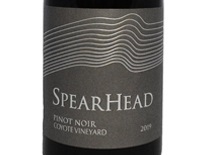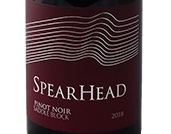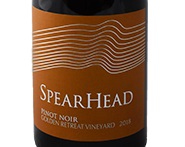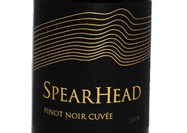And it did not disappoint.
Doing a little homework seemed in order for my first-time visit, and here are the resulting factoids:
The Okanagan Valley accounts for 90% of all wines made in British Columbia. As a wine producing region, it is home to just under 10,000 acres and over 275 wineries. Looking at what is planted, the breakdown is interesting in that four red grapes–Merlot, Pinot Noir, Cabernet Sauvignon and Cabernet Franc–account for about 75% of the total. And a similar pattern emerged for white varieties with four accounting for 70%: Pinot Gris, Chardonnay, Gewurztraminer, and Riesling. Only seven wineries try to make an Icewine, and It was a surprise to see that hybrids like Baco Noir and others which are thought to thrive in cold climates have pretty much disappeared.
With a little digging, I found out why. As a vinifera wine region, the Okanagan Valley came to life in 1990 with the formation of the British Columbia Wine Institute. Several events occurred earlier to start turning things around. In 1974 when most vineyards were planted to hybrids, the BC government imported 4,000 vinifera vines and between 1977 and 1982 conducted experiments in 18 different sites. As a result, some 33 vinifera varieties made the cut by demonstrating an ability to ripen and produce quality wines in the Okanagan.
Then, in 1988, when hybrids still outnumbered vinifera varieties, the GATT trade agreement between the USA and Canada was another major turning point. Yes, when faced with stiff competition for the home wine market especially from nearby Washington State, the product needed to be upgraded to be competitive. Dealing with the onset of free trade in the late 1980s, the Okanagan wine folks removed two-thirds of the grape acreage which was mostly hybrids, leaving only 1,134 acres of grapes in 1990.
In 1990, the BC Vintners Quality Alliance was formed and the VQA designation which guaranteed authenticity became a rallying cry. Displayed on labels, “BC VQA” means the wine was made 100% from BC grapes. Not exactly complicated or detailed, but this was enough to spark major growth.
The On-Site Visit
Getting there from Vancouver required a 4+ hour drive over the steep mountain range to arrive at Kelowna, a bustling lakeside city that happens to be in the middle of the Okanagan Valley. The lake is the Okanagan Lake, a deep one gouged out by glaciers that is 85 miles long and 3 miles wide. Some 40 wineries are located just outside of Kelowna and neighboring West Kelowna. As you drive around the steep hillsides noticing lava rocks here and there you sense the presence of Mt. Boucherie, a once active volcano.
While most wine regions claim to be unique in some way, the Okanagan Valley with its history of glaciers and volcanoes is unquestionably unusual, arguably unique. Then factor in the location, the 49th parallel east of the mountains in British Columbia, and it is a kind of high desert made semi-arid as the mountains keep annual rainfall totals low. When compared to Napa, the Okanagan enjoys at least 2 extra hours of daylight from July through the harvest. That’s according to winemakers who add that the season is short as budbreak occurs much later.
During my visit in early September, winemakers were wrapping up their final pre-harvest cleaning of tanks and barrels, anticipating harvest to be in full swing by the end of September.
Now, It Gets Complicated with Places
While most wines are labeled “Okanagan Valley” as their origin, within that area are over a dozen sub-regions. But within each sub-region, the growing conditions vary widely due to elevation, aspect, proximity to a lake, and soil types.
Kelowna and Penticton are the two major sub-regions. Located at the southern end of the Lake, Penticton is a lively village and some 85 wineries are within a 20 minute drive. In Lake Country way to the north, the vintages risk an occasional arctic freeze, while in the south close to the USA border, vineyards in Osoyoos and Oliver thrive in a hot, arid summer in Canada’s only desert.
Despite the incredible diversity of sites, a few generalizations hold up. For instance, the east side is much warmer than the west side of the Valley because it receives hot afternoon sun well into the evening. There can be ripening differences of as much as two weeks for the same variety at the same latitude depending on which side of the valley it is planted.
The area stretching from Peachland to the north end of the Okanagan Valley has the coolest climate of the Okanagan. This makes it an area well suited to earlier ripening varieties. Pinot Noir dominates with 27% of the acreage while Chardonnay, Pinot Gris and Riesling together cover another 40%. The west-facing vineyards of Naramata Bench and Skaha Bench can ripen later ripening varieties in the warmer sites. Merlot, Pinot Gris, Pinot Noir, Chardonnay and Gewürztraminer are the most planted varieties there.
And in the southern end of the Okanagan, both Cabernet Franc and Syrah seem to perform the best.
Wines & Wineries
Is there any other wine region where winemakers’ conversations range from arctic cold to desert conditions? The sheer diversity of soils and exposures combined with elevation and proximity to lakes lead to a wide range of wines of unique character.
Most wineries are small and family-owned, focusing on wines from their own vineyard which explains the widespread use of “Estate” in so many winery names. Wine clubs are “the” thing for most, and quite a few wineries are restaurants or bistros. Several winery names are intriguing. My first wine tasted was a Rose from Dirty Laundry Vineyard before moving on to See Ya Later Ranch Pinot Noir and then to Blasted Church with its Bordeaux blends: Holy Moly, Nothing Sacred, and Cross to Bear. My favorite was Blasted Church’s 2019 “Big Bang Theory,” a Merlot based mélange. Oh, and of course there’s a clothesline with laundry drying in front of Dirty Laundry. Yes, Canadians have a sense of humor.
As for the wines, while I suspect Riesling and Gewurztraminer are sentimental favorites, Pinot Gris and Chardonnay pay the bills. Syrah, like one from Corcellette, will have you thinking of Cornas. But overall the most successful to me were Merlot, Cabernet Franc, and, most surprisingly, Pinot Noir.
It turns out Pinot Noir acreage has grown more rapidly (79% between 2006 and 2014) than any other widely planted red grape as growers find it well suited to the BC terroir. Most of the plantings are in the central to north part of the Okanagan Valley, Kelowna, Summerland, and Penticton. I encountered several standouts such as the 2019 See Ya Later Ranch “Legacy,” 2018 Fox & Archer Pinot Noir, Creekside Vineyard, and the 2019 Tantalus Winery.
Spearhead, a small winery in Kelowna, focuses on Pinot Noir and its four Pinots from 2019 convinced me that the most finicky grape enjoys the terroir of the Okanagan region. Here are reviews of four fine examples from this producer:
 Spearhead Winery (Okanagan Valley) Pinot Noir “Coyote” 2019 ($36): This is sourced from a vineyard in West Kelowna with highly volcanic soil and situated at 1,300 ft elevation. It is planted entirely to the Dijon #115 clone, which is said to be one of the few clones that can stand alone. A few winemakers in Santa Barbara believe in it. At Spearhead, the winemaking is Burgundian with de-stemming, cold soaking and fermenting with native yeasts. This one was aged 13 months in French oak, 25% of it new. It comes across with light cherry and forest floor earthiness, and is medium-bodied. Very lively on the palate. It has a long finish that accentuates its cherry, herbal side and also shows definite tannins. 350 cases made. 90
Spearhead Winery (Okanagan Valley) Pinot Noir “Coyote” 2019 ($36): This is sourced from a vineyard in West Kelowna with highly volcanic soil and situated at 1,300 ft elevation. It is planted entirely to the Dijon #115 clone, which is said to be one of the few clones that can stand alone. A few winemakers in Santa Barbara believe in it. At Spearhead, the winemaking is Burgundian with de-stemming, cold soaking and fermenting with native yeasts. This one was aged 13 months in French oak, 25% of it new. It comes across with light cherry and forest floor earthiness, and is medium-bodied. Very lively on the palate. It has a long finish that accentuates its cherry, herbal side and also shows definite tannins. 350 cases made. 90
 Spearhead Winery (Okanagan Valley) Pinot Noir “Saddle Block” 2019 ($36): Made from a mix of clones grown in the winery’s estate vineyard, which is noted for its glacial loan and sandy-clay soils. Similar winemaking regime to the “Coyote” bottling, with aging for 13 months in French oak, 25% new. At first, it comes across as delicate with light plum and cherry fruit notes, along with a subtle floral fragrance. With vibrant acidity and light tannins, it is a pretty youngster that should age well. More finesse than power which makes it charming. 450 cases made. 93
Spearhead Winery (Okanagan Valley) Pinot Noir “Saddle Block” 2019 ($36): Made from a mix of clones grown in the winery’s estate vineyard, which is noted for its glacial loan and sandy-clay soils. Similar winemaking regime to the “Coyote” bottling, with aging for 13 months in French oak, 25% new. At first, it comes across as delicate with light plum and cherry fruit notes, along with a subtle floral fragrance. With vibrant acidity and light tannins, it is a pretty youngster that should age well. More finesse than power which makes it charming. 450 cases made. 93
 Spearhead Winery (Okanagan Valley) Pinot Noir “Golden Retreat” 2019 ($36): From a hilltop vineyard in Summerland overlooking the Okanagan planted to a mix of clones, this wine was similarly processed with the same time in French oak as the other Spearhead Pinots. Initially, it impresses with its smooth, silky, velvety texture. With airing, it also shows dark plum, earthy and some mineral touches. Again, medium bodied with vibrant flavors and fine balance. Subtle tannins suggest it could be an ager. 440 cases made. 93
Spearhead Winery (Okanagan Valley) Pinot Noir “Golden Retreat” 2019 ($36): From a hilltop vineyard in Summerland overlooking the Okanagan planted to a mix of clones, this wine was similarly processed with the same time in French oak as the other Spearhead Pinots. Initially, it impresses with its smooth, silky, velvety texture. With airing, it also shows dark plum, earthy and some mineral touches. Again, medium bodied with vibrant flavors and fine balance. Subtle tannins suggest it could be an ager. 440 cases made. 93
 Spearhead Winery (Okanagan Valley) Pinot Noir “Cuvée” 2019 ($42): This is the winemaker’s best cuvée selected from barrels, and the final blend is a mix of Dijon clones plus the Mt. Eden and Pommard Pinot clones. The wine was fermented in the traditional approach as were the 3 vineyard Pinots, but with the difference that this was aged in more (40%) new French oak. It is full of ripe black cherry, rose petal and spice along with a hint of toasty oak. This is a very integrated and velvety smooth Pinot with some refined tannins. But ,as was true of all these Pinots, there’s an underlying layer of vibrancy which is associated with the wine’s natural acidity and low pH. 430 cases made. 94
Spearhead Winery (Okanagan Valley) Pinot Noir “Cuvée” 2019 ($42): This is the winemaker’s best cuvée selected from barrels, and the final blend is a mix of Dijon clones plus the Mt. Eden and Pommard Pinot clones. The wine was fermented in the traditional approach as were the 3 vineyard Pinots, but with the difference that this was aged in more (40%) new French oak. It is full of ripe black cherry, rose petal and spice along with a hint of toasty oak. This is a very integrated and velvety smooth Pinot with some refined tannins. But ,as was true of all these Pinots, there’s an underlying layer of vibrancy which is associated with the wine’s natural acidity and low pH. 430 cases made. 94
